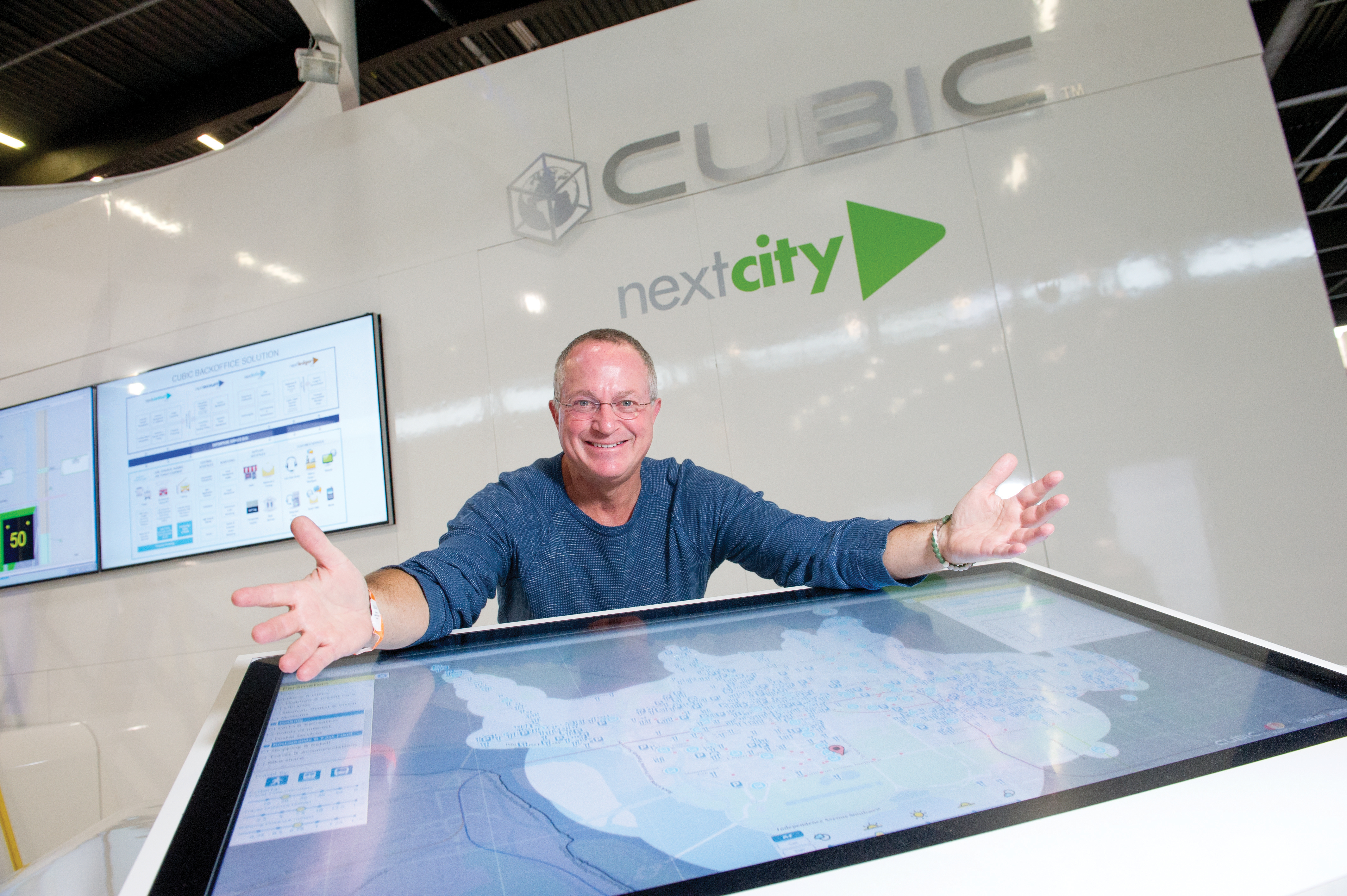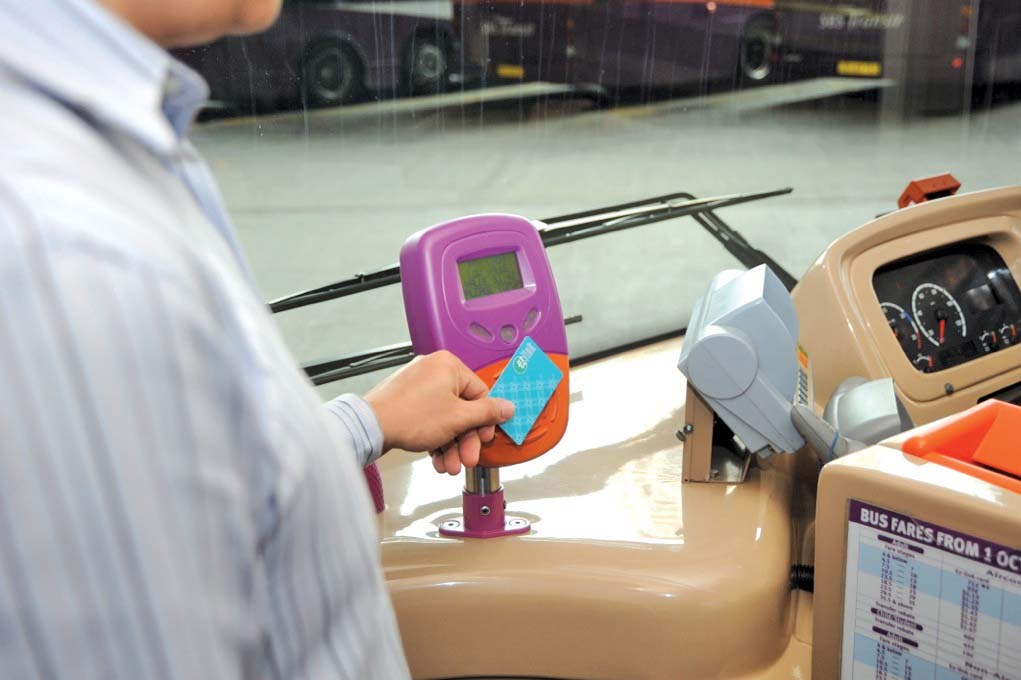Integration of travel payment and information is bringing utopia in management of transportation as a single intermodal system is closer to reality. Larry Yermack writes. For decades, transportation planners and ITS visionaries all believed that transportation would not be fully optimised until it could be managed as a single intermodal system. Relationships between modal operators left this more in the dream category than reality. However, the steady march of advances in payment technology have brought us

Larry Yermack - predicting that a utopian vision of intermodality will be realised in the near future
Integration of travel payment and information is bringing utopia in management of transportation as a single intermodal system is closer to reality. Larry Yermack writes.
For decades, transportation planners and ITS visionaries all believed that transportation would not be fully optimised until it could be managed as a single intermodal system.Relationships between modal operators left this more in the dream category than reality. However, the steady march of advances in payment technology have brought us ever closer to realising this vision of intermodaility.
It may have become a cliché, but it is true that the world is changing faster than ever before, bringing with it the promise of increased convergence for mobility services.
Wireless and mobile payments are becoming ubiquitous. Such services are beginning to take a fully integrated, “whole of transportation” approach to journeys, information and payment management.
This should enable transportation stakeholders to predict, influence and eventually manage transport demand; meaning existing – and often restricted – transportation capacity can be used in the most effective and efficient way, for the benefit of all. At the same time, traveller convenience and choice will grow, making public transportation more attractive.
Universal accounts
The near future will see the integration of multiple modes of transport – cars, buses, trains, bicycles, ferries – for optimised and personalised end-to-end journey planning and payment using a universal transportation account for the management of fares, tolls and parking – all based on real-time travel data.The goal of these initiatives is to deliver integrated solutions that help transportation providers and authorities manage their operations and services while giving passengers choices in the smartest and easiest ways to pay their fares.
So why is this important? The global population is growing at a tremendous rate, with metropolitan and suburban areas morphing into mega-cities – merging cities and towns and their commercial and industrial districts into massive conurbations with bigger commutes and greater transportation demands. Cities and mega-cities will house most of the world’s population. As part of a global society, we are all increasingly aware of the environmental impact of our journey choices and the need to change our behaviour. All of these factors will lead inexorably to more journeys and the need to consider how we choose to travel in the future.
Critical factors
Today, a person’s journey choice is principally determined by three factors: the overall cost, the timeliness and the reliability of any given mode of transportation. Increasingly, we are adding a fourth dimension: the environmental impact.Well planned and efficiently managed networks will use all available and emerging technologies to deliver a positive impact on all four of these critical deciding factors.
Industry leaders are devising strategies for how to help keep the world on the move as we start to see this evolving future emerge, setting out clearly how the intelligent travel solutions of the future will work.
Crucially, such strategies are establishing what we need to be doing now to avoid missing opportunities and to make the dream of optimal and intermodal transportation a reality.
The truly integrated payment and information systems of the future are aimed not only at operators but also regional planners who are managing total demand across the infrastructure of cities or regions. Intelligent integration will help them to regulate demand by setting tolls and fares, parking rates and even taxi fares across all the relevant modes of transport within a region.
It will empower their customers with clear and precise, personalised information to enable the best travel decisions, minute by minute. It will deliver real benefits in truly real-time traveller information by incorporating mobile apps, passenger information signs, tolling and usage charging, parking accounts and journey planning systems.
Holistic networks
Furthermore, for the first time, intelligent integration of payment and information will enable public authorities to address one of the more significant challenges they face when encouraging people to get out of their cars and onto public transportation: the fact that drivers are, on the whole, unfamiliar with paying for public transportation. Whereas traditional tolling accounts serve to only pay toll fares, the future will see a truly holistic transport network across a city or region by making public transportation much easier to use for drivers – using a single account to pay for transit fares and road tolls or ‘user charges’.With the ability to manage all their needs from one account, people will find switching between modes – and appreciating their true cost – will be simpler and more attractive.
The growing warehouses of data on general public behaviour in making transportation choices will help stakeholders understand, at both macro and micro level, which factors are most prevalent in causing congestion points and bottlenecks in their cities – allowing them to take timely and appropriate action to alter the impact of these factors and thus have a real positive impact on both the supply and the demand for its use.
Realising the vision
Is this all still a dream? Partly not.Nextcity is a vision of transportation payment grounded in the prevalence of several factors coming together for the first time – the ubiquity of smart devices capable of receiving rich information in real time; the power of telecoms to transmit big data and resultant information fast; the power of systems to take data and turn it round intelligently – in seconds – and the growing trend towards using contactless payment as a means of paying for travel.
Travel transactions in the form of contactless payments are happening for real, with services being introduced in London and Chicago in the near future. And of course, simple smartcard transactions are being made in hundreds of major cities already.
Payments equate to data which in turn means information. Customised, targeted information will be delivered in near real time to travellers across all modes, enabling them to make instant decisions about their travel. And operators will be able to offer meaningful incentives to entice people onto alternative modes, thereby relieving pressure caused by congestion, problems or bottlenecks. After a few well-meant but premature attempts over recent years, the essential pieces are finally falling into place for truly intelligent travel.%$Linker:










